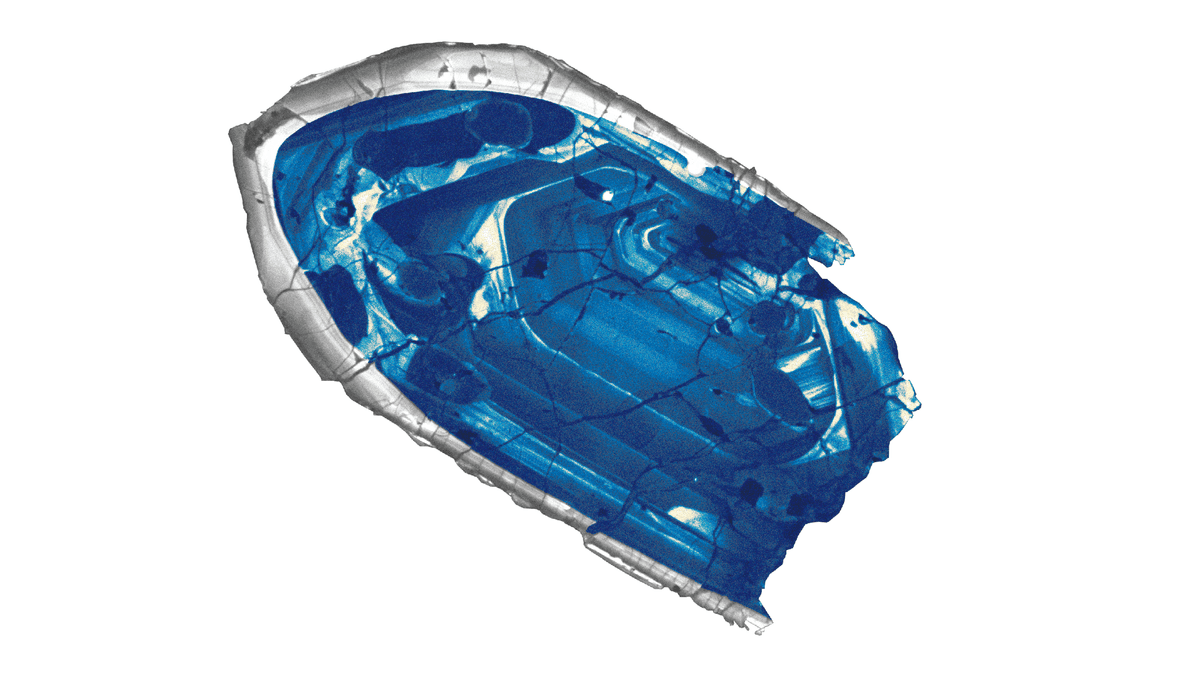
We know that Earth is about 4.54 billion years old, but trying to piece together the very earliest stages of its evolution is easier said than done. Luckily, science has had some help from a super blue speck of zircon dated to around 4.4 billion years old, making it the oldest chunk of Earth to ever have been discovered – though it’s not the oldest thing we’ve ever found on the planet.
The ancient crystal was found in the sticks of Western Australia at a remote rock outcrop called Jack Hills. In a 2014 study, scientists dated the discovery to 4.39 billion years old, give or take a few million years. In other words, they’d confirmed the oldest known geological material.
Even before this research, zircons were known to be some of the oldest materials on Earth, though finding any older than 4.3 billion years old is extremely rare, making the Jack Hills find all the more significant.
Zircons form as a mineral within certain magmas as they cool. They’re tough as nails and capable of surviving for billions of years, even when subject to intense heat or pressure. This makes them perfect time capsules from Earth’s early history.
Bear in mind, this particular zircon crystal is absolutely tiny, barely visible to the naked eye. Despite its microscopic size, however, it holds some huge implications.
Its date of origin was a mere 160 million years after the formation of our Solar System. This means it was created just tens of millions of years after an early proto-Earth collided with a giant Mars-size object, creating our Moon in the process and turning our planet into a glowing red ball of molten rock.
However, this speck of zircon suggested that this fiery hellhole didn’t last for too long. If zircon was around 4.4 billion years ago, then Earth must have cooled and congealed by then, forming a crust. Working within this time frame, the prehistoric zircon serves as evidence that Earth developed liquid water environments around 4.3 billion years ago and possibly life shortly after.
“This confirms our view of how the Earth cooled and became habitable. This may also help us understand how other habitable planets would form,” Professor John Valley, a geochemist at the University of Wisconsin-Madison, said in a statement made in 2014.
“The Earth was assembled from a lot of heterogeneous material from the solar system,” added Valley. “Our samples formed after the magma oceans cooled and prove that these events were very early.”
However, while the Jack Hills zircon might be the oldest piece of Earth we’ve ever found, it’s not the oldest material to ever have been discovered on the planet. That title goes to some tiny grains of interstellar dust.
These miniscule fragments of the Murchison meteorite that fell in Victoria, Australia back in 1969 have been dated at a whopping 5 to 7 billion years old. According to the scientists who analyzed them, the grains are evidence that the Milky Way went through “a period of enhanced star formation” during this time.
An earlier version of this article was published in April 2023.
Source Link: 4.4-Billion-Year-Old Piece Of Earth Is One Of The Oldest Things We’ve Ever Found